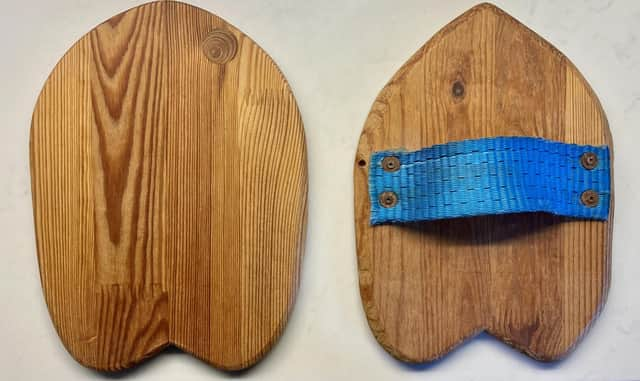Passions: Just when I should be making surfing easier, I take up handplaning


As a general rule, as surfers get older they tend to opt for longer and longer boards. Someone who has only ever ridden high-performance shortboards in the six-foot range through their 20s and 30s might start finding paddling a bit of an effort by the time they hit their 40s, and so switch to a more forgiving mid-length board, maybe a seven-foot-something retro-inspired shape, so they can pretend the decision to up-size has something to do with “finding ways of surfing more creatively”, rather than waning strength and fitness. Late 40s to early 50s? Probably getting time to go for something over nine feet. Sure, you won’t be getting much air on a board that’s nearly as long as your car, but on the up-side you’ll be able to catch any little ripple that comes your way, hopefully without giving yourself a hernia in the process.
This, on the whole, seems to be the natural way of things, so what the hell am I doing – a very average surfer in the second half of my 40s – trying to ride waves using home-made wooden surf-craft that are smaller than a frisbee?
Advertisement
Hide AdAdvertisement
Hide AdThe idea of handplaning isn’t new, but for some reason it’s seen – well, let’s not get carried away and call it an explosion, but certainly a modest uptick in popularity in the last decade or so. Enthusiasts call it “the purest form of surfing” and it’s easy to see why. Rather than using a surfboard to ride across the face of a wave, handplaners use the side of their body as a surf vehicle, wave-side arm outstretched to maximise the available planing area. And at the end of that outstretched arm: the handplane – a little hydrodynamic disc which, once you’re moving at speed, allows a very limited degree of control and also makes it easier to get your head out of the water so you can see (usually briefly) where you’re going.
For somebody of my limited ability, there’s no element of performance to this kind of wave-riding – once you’ve committed, you’re really just trying to torpedo along in the curl for as long as you can before the inevitable beating. For a second or two, though, you get a quick flash of what it must feel like to be a dolphin, rocketing through the water, almost as if you’ve become part of the wave. And then, of course, you get slammed head-first into the sand.
